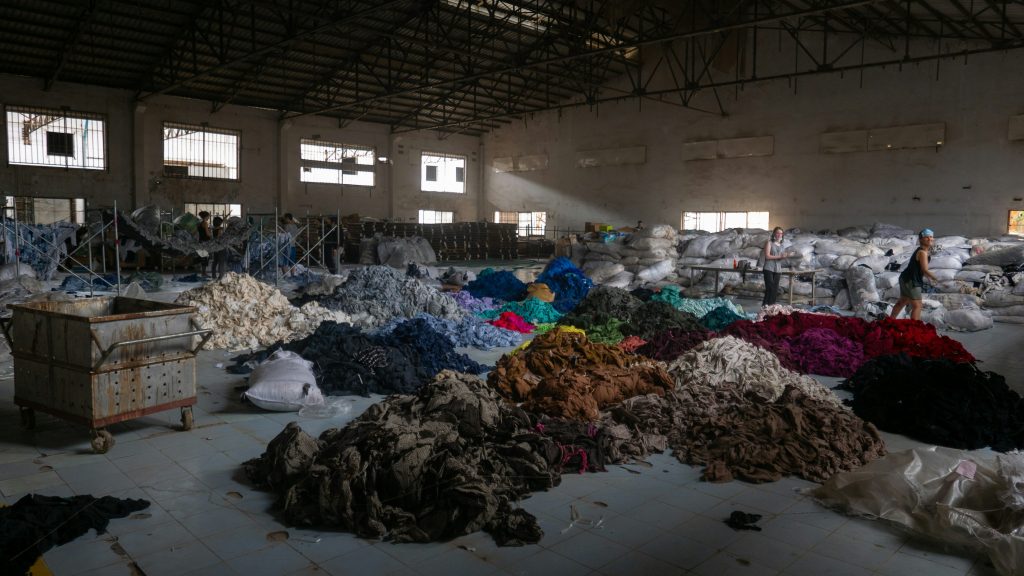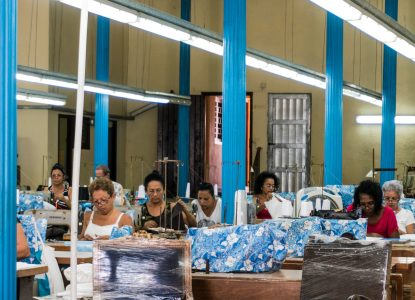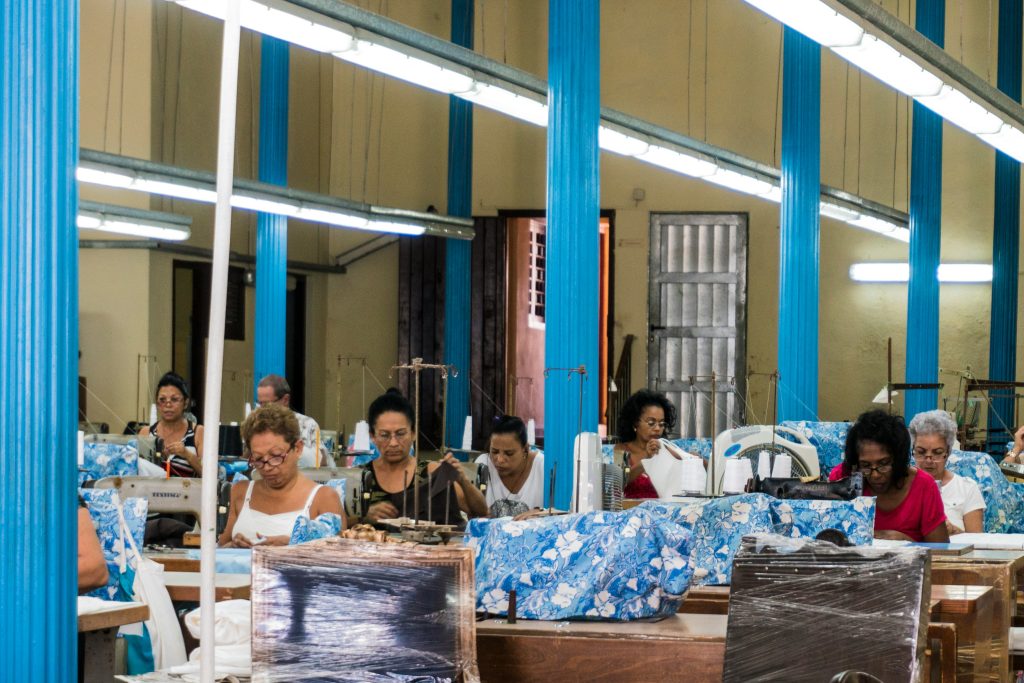By JoAnne Wadsworth, Communications Consultant, G20 Interfaith Forum.
– – –
On June 26th, 2025, the G20 Interfaith Forum, in partnership with Praeveni Global, hosted a webinar on “Failures of Fast Fashion to address Modern Slavery” as part of a monthly series commemorating the 25th anniversary of the Palermo Protocol. The panel featured Ayesha Barenblatt, founder of Remake; Maxine Bédat, founder and director of the New Standard Institute and author of “Unraveled: The Life and Death of a Garment”; and Sheela Ahluwalia, director of policy advocacy at Transparentem. The discussion was moderated by Duncan Jepson, Director of Strategy and Operations at Praeveni Global.
The Scale of Overproduction and Environmental Devastation
The webinar opened with stark images of textile waste across the globe—from the Atacama Desert’s clothing dumps to Ghana’s role as a major destination for discarded apparel. The panelists emphasized that this represents massive overproduction driven not by consumer demand, but by economic strategy. Bédat traced the concept of fashion cycles back to Louis XIV’s economic minister, who invented fashion seasons as a tool for economic development.
Bédat distinguished between traditional fast fashion’s 50 cycles per year and what she termed “trash fashion”—tens of thousands of new products introduced daily. She explained:
“Trash fashion” is very much an economic driver, certainly, for the companies that are benefiting from this now endless cycle.
The reliance on fossil fuel-based materials like polyester has made clothing artificially cheap, creating what Barenblatt described as a system where “dreams of fast moving consumer goods” serve as economic placation while fundamental needs like housing and retirement remain unaffordable.

Supply Chain Opacity and the Tiers of Exploitation
A central theme was the deliberate complexity of fashion supply chains, which operate across multiple “tiers”—from raw material production to final assembly. Ahluwalia explained her organization’s investigations across these tiers, revealing forced labor conditions in Taiwan’s textile factories involving workers from Vietnam, Philippines, Indonesia, and Thailand.
The panelists highlighted how companies use this complexity to maintain “plausible deniability” about conditions deeper in their supply chains. While tier-one factories (final assembly) can be traced through brand labels found in finished products, tier-two and tier-three operations remain largely invisible to both regulators and consumers.
Systemic Labor Exploitation and Gender-Based Violence
The discussion revealed how the fashion industry’s business model inherently creates conditions for exploitation. Barenblatt emphasized the gendered nature of this workforce and the invisibility that enables abuse:
“This industry has benefited so much from keeping the workforce invisible. Who is she? What is her life like? Who are these 70 million, mostly women of color, that power this industry that’s worth 2 and a half trillion dollars, and yet she can’t put 3 meals on a table?”
Ahluwalia detailed the particular challenges of uncovering gender-based violence in factory settings, explaining how power dynamics, economic dependence, and social isolation make reporting nearly impossible. She described investigations revealing horrific conditions for young women workers, including document confiscation, supervised visits, and multi-year contracts that trap workers in exploitative situations.
The panelists noted that gender-based violence often goes undetected because it requires building long-term trust relationships with workers—something that traditional audit processes cannot achieve.
The Failure of Social Auditing
A significant portion of the discussion focused on the fundamental inadequacy of current social auditing systems. Ahluwalia revealed that many factories where her organization uncovered serious violations had been recently certified by major auditing companies, including two factories in the Rana Plaza building that collapsed, killing over 1,000 workers.
The panelists identified multiple systemic problems with auditing: widespread fraud and document falsification, shallow processes, lack of transparency, complex auditing chains that fracture responsibility, and no legal liability for auditors who miss violations. Ahluwalia explained:
“It’s a system that I think everyone knows is broken. But it’s convenient, and that’s why it persists.”
Regulatory Failures and Industry Resistance
The webinar examined current and proposed regulations, including the U.S. import bans under Section 307 of the Tariff Act and the European Union’s Corporate Sustainability Due Diligence Directive (CSDDD). However, Ahluwalia expressed concern about the CSDDD’s recent weakening, which would limit due diligence requirements to tier-one suppliers unless companies receive specific information about problems deeper in supply chains.
Bédat described her organization’s work on Fashion Acts in New York and California, noting strong industry opposition even from companies that publicly claim to support human rights. She recounted a particularly revealing exchange with a multinational brand who accused her of being neocolonial in her regulatory efforts:
“It’s “neocolonial” of me to suggest that you advance laws that would protect garment workers that you are actively exploiting, but it is not neocolonial of you to be in this country right now, profiting off of these workers?”
Global Scope of the Problem
Challenging common assumptions, Barenblatt emphasized that sweatshop conditions exist globally, not just in developing countries. Her organization has conducted investigations in downtown Los Angeles and Prato, Italy, revealing that “made in Italy” labels can mask modern slavery just as much as products from Asia.
The panelists noted how economic pressures and tariff disruptions are creating new vulnerabilities, with brands increasingly using “contingent suppliers” that bypass established due diligence standards—echoing the force majeure excuses used during COVID-19 when brands cancelled orders and refused to pay suppliers.
Solutions: Worker Power and Systemic Change
Despite the systemic nature of these problems, the panelists identified clear paths forward. All emphasized that meaningful change requires worker empowerment through unions and legitimate worker representation. Ahluwalia argued:
“Unions, worker voice, worker power. We need unions or legitimate worker representations who can help identify the problems and prevent the problems.”
The discussion highlighted successful examples like binding agreements (such as the Dindigal accord) and worker-driven social responsibility programs that put workers rather than brands at the center of monitoring and enforcement.
Bédat stressed the need for regulatory approaches that create liability for companies, making social auditing more like financial auditing where there are consequences for failures. The panelists agreed that sustainable change requires government investment and enforcement rather than relying solely on voluntary corporate initiatives.
Conclusion
The webinar demonstrated that addressing modern slavery in fashion requires acknowledging that current systems are not failing accidentally—they are working exactly as designed to maximize profits while minimizing accountability. The panelists agreed that meaningful change demands fundamental restructuring toward worker empowerment, regulatory accountability, and recognition that fashion’s labor problems are not unfortunate side effects but integral features of the current business model.
Jepson concluded by encouraging attendees to follow the speakers’ ongoing work and noted that future webinars would continue exploring different aspects of human trafficking and modern slavery.
– – –
JoAnne Wadsworth is a Communications Consultant for the G20 Interfaith Forum Association and Editor of the Viewpoints Blog.



